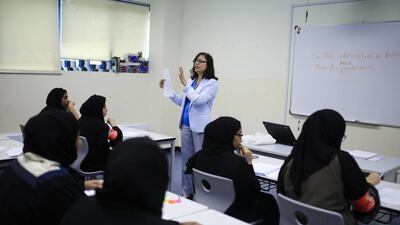The results of the Programme for International Student Assessment (Pisa) rankings were released this week. While the UAE retained its top ranking in the region, there was a drop in global ranking for science and reading. Many pay close attention to these results due to the target of reaching the top 20 set by National Agenda. While these targets allow educators to craft strategies for raising the quality of education in the country, standardised tests don’t accurately reveal our national strengths and areas for improvements.
To better understand the role that these tests can play in society, let’s look at how and why certain countries perform better than others. Countries such as Japan, Finland and South Korea that are regularly in the top 10 benefit from their homogeneous and closed societies in preparing for these tests. They have one national curriculum and, given the relative lack of diversity in their societies, they are able to prepare their children in a single holistic manner to excel. The results of this singular, national focus is their strong results in international tests.
If we shift our focus toward multicultural societies such as the United States, the results are much more revealing. The US regularly fails to crack the top 20 ranking of Pisa. Is this because American schoolchildren lack the intelligence of their Japanese counterparts? Of course not. Given the diversity of the US and the subsequent multiplicity in school curriculums, America doesn’t have the same advantage in training schoolchildren for standardised tests in a unified manner. While this is not great for testing, the result of America’s multicultural education sector is the country’s booming innovation sectors. Diversity breeds new ideas and approaches to problem solving.
The same can be said of the UAE’s education model. Children here don’t study just one curriculum. Rather, they are enrolled in our national curriculum as well as everything from Britain to India and everywhere in between. It is critical to set national targets of reaching the top 20 of the Pisa rankings because it forces education professionals to streamline their approach to teaching, but we can equally embrace the diversity of our education curriculums as a net positive. In mixed environments, such as our own, innovation naturally bubbles to the surface. Just as in the US, we are a melting pot of different nationalities and cultures. As the world grows closer, societies such as our own will naturally be at the forefront.

